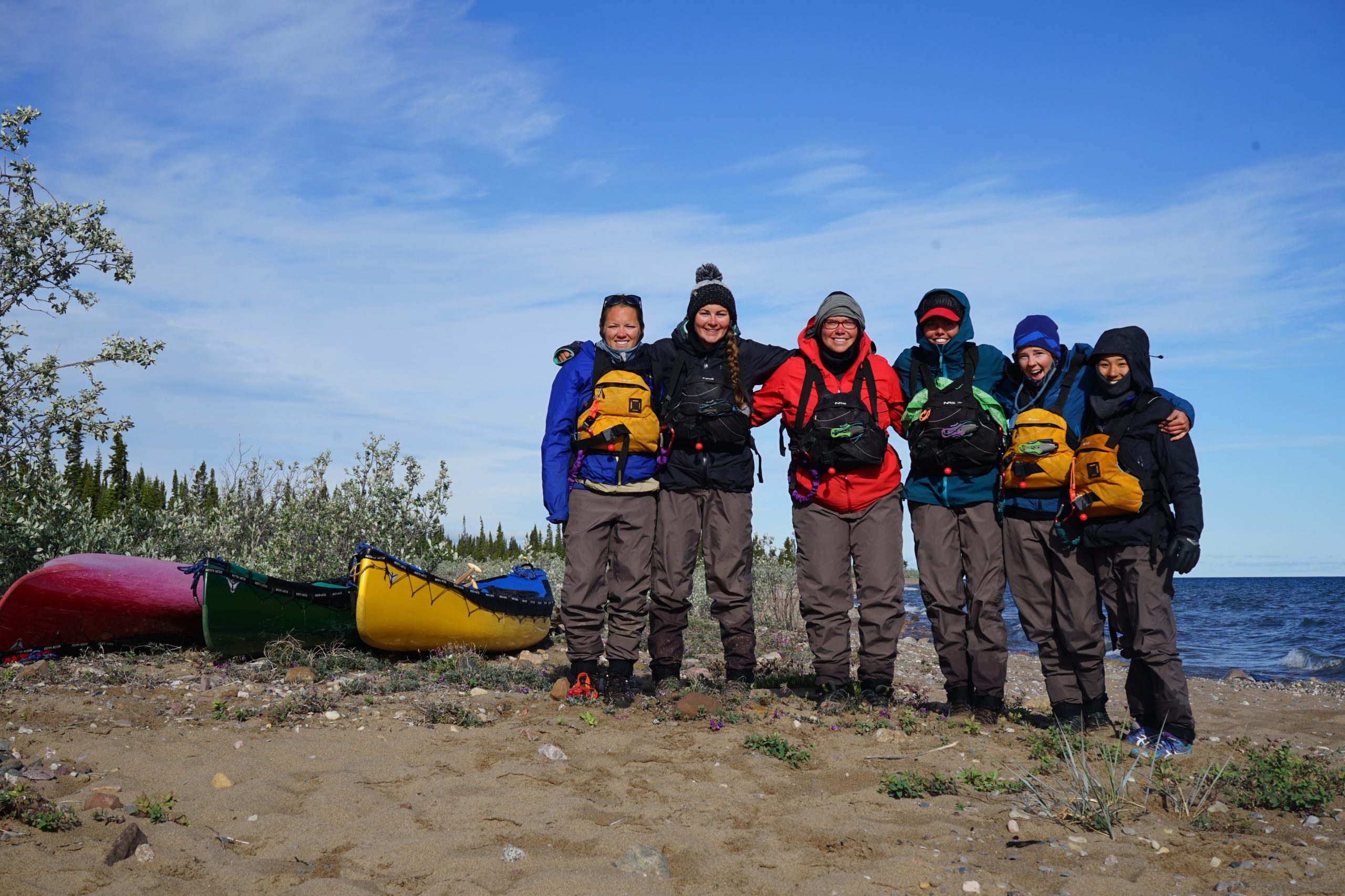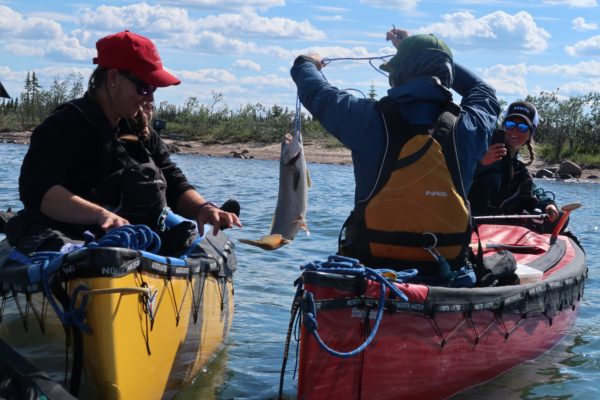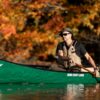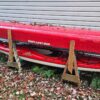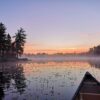In the summer of 2017, 6 alumna of a canoe tripping focused summer camp for girls in Minnesota set out on a major Arctic expedition. Their names are Lindsay Wiebold, Meredith Freshley, Maddie Stoehr, Marissa Sieck, Emily Spangler and Sammi Armacost. They called the trip (and themselves, really) 6 North of 60 – 6 women, travelling on 6 Arctic rivers, above the 60th parallel north.
he goal of their project was significant: to “be the first to paddle a previously unconnected canoe route 1,200 kilometers from the Mackenzie Mountains in Canada’s Northwest Territories to Nunavut’s Coronation Gulf via the Keele River, Great Bear Lake and Coppermine River” – and to do it in 60 days (they completed the trip in 62). More broadly, the goal was to inspire a new generation of young women to plan similarly ambitious trips, to lead by capable example and in doing so change their peers’ perceptions of what they can accomplish. Over winter and spring of this year I had the opportunity to interview some of the 6 North of 60 group members over the phone to ask about their experiences. Read on for highlights from our conversations.
You all met up at summer camp in Minnesota; How did your experiences at camp prepare you for or inspire the 6 North of 60 project?
Meredith Freshley – We all met on staff at Camp Ogichi-daa-kwe in northern Minnesota, though many of us knew eachother before then as campers. [Our camp’s] mission is all about empowering young women to be outdoors and to lead, so it really gave us the hard and soft skills to be able to do a trip like this.
Sammi Armacost – I grew up in a big city and never really had any kind of exposure to canoeing or camping. One summer my dad sent me to camp at Ogichi and it really changed my life and opened my eyes to a whole other world of 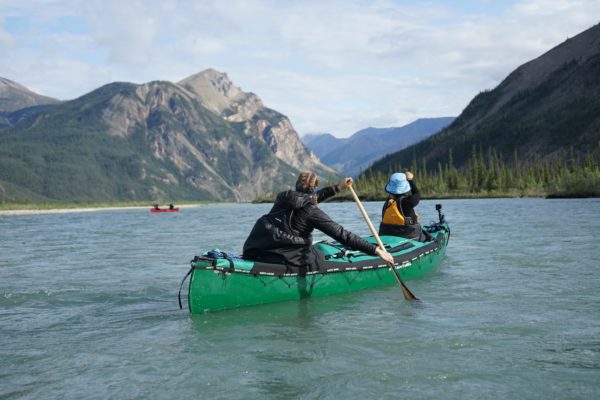
Meredith – The inspiration for the trip really is that Ogichi is pretty new, but the boys camp (Kooch-i-ching) has been around for 90 years and their staff have done a number of arctic canoe trips independently. We were inspired to push Ogichi’s program further in that direction. We wanted younger female campers to know that this is something that they can do too, and to lead by example.
Sammi – Our trip in the arctic kind of symbolizes the growth of the girls camp. Some of us had been campers there since the beginning or close to the beginning so we watched our male counterparts and learned their history and legacy through our dads and uncles and brothers and cousins. Eventually we were like, “Okay it’s been 13 years since the girls camp has been around and it’s time for us to do this. Let’s do an arctic trip.”
Did you feel pressure being the first group? Or like you had something to prove?
Sammi – Yeah. I mean, there were naysayers from the beginning and people who second guessed our qualifications… But that doubt really only just fueled us. We wanted to defy their expectations and symbolize a new era where girls don’t have to overcome that kind of doubt, they can just go do it. We just wanted to get the ball rolling for future generations.
The trip that you guys planned involved traversing six northern and fairly remote bodies of water. Which stretch was the most physically or mentally challenging for you and why?
Lindsay Wiebold – The most challenging aspect of the trip was portaging upstream on the Sloane River. There were no trails so there was a ton of bushwhacking; it was really slow going.
Meredith – Definitely the portaging sections between the Sloane and the Hook River. One particular day comes to mind, it was actually Sammi’s birthday, that we knew was going to be horrible but we made an effort to make it fun. The portage that day was about 7 miles to get to the Hook river and we woke up to music, danced around camp and made pancakes and just tried to make the day as joyful as possible since we knew it was going to be the hardest day of the trip and it just happened to fall on her birthday. We made her a crown out of flagging tape and gave her cards that morning and just got amped up for the gruelling day ahead.
What stands out to you specifically about tripping in the arctic that sets it apart from other, previous trips that you’d done before?
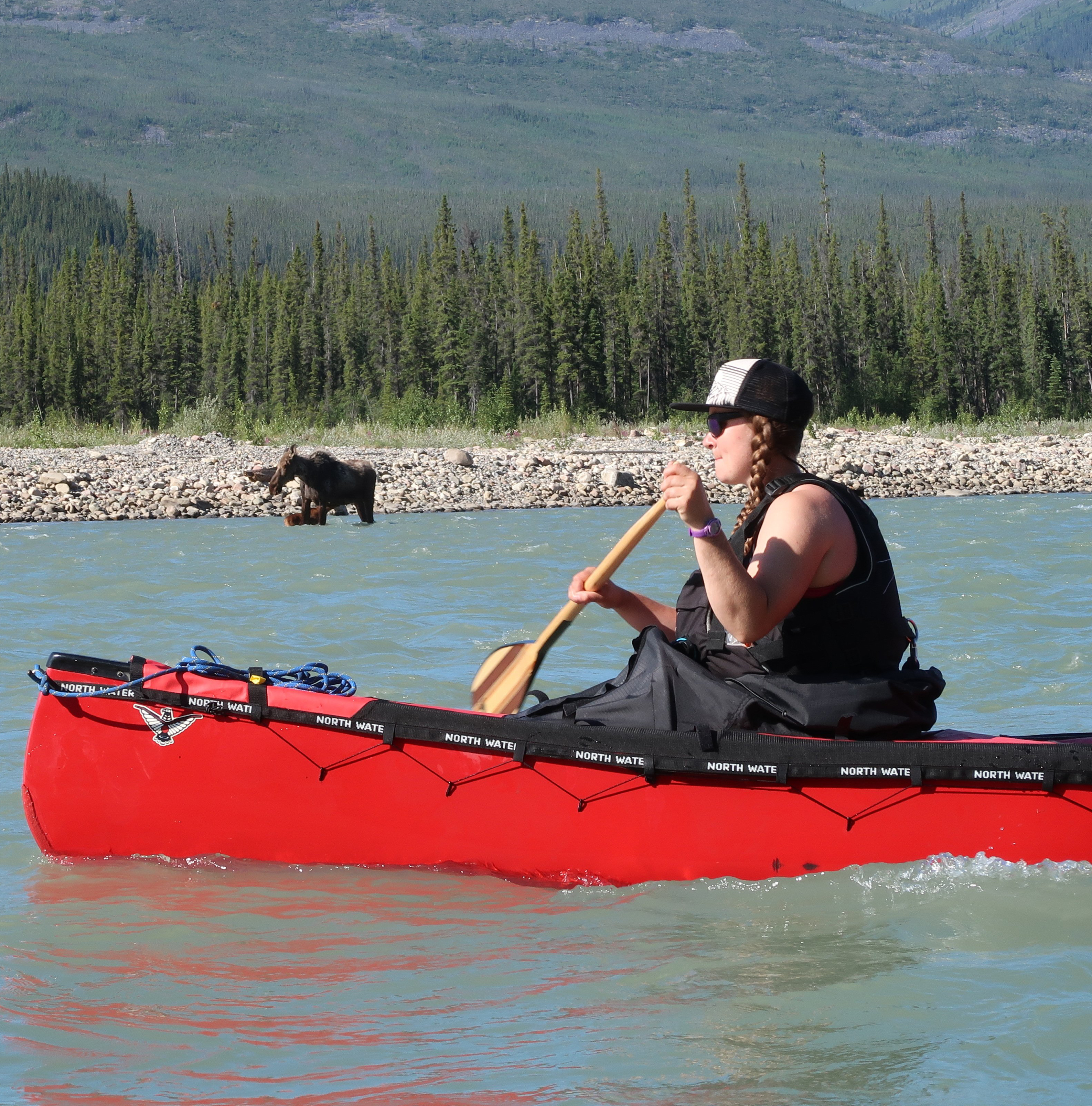
Emily Spangler – The Arctic is more epic, wild, and remote than anywhere I’ve ever been. Our route led us through some unbelievable landscapes; we went from jagged mountains, to quiet river valleys, to the most enormous lake I’ve ever paddled, to traversing scraggly tundra, to whisking down some crazy white-water through steep colourful canyons, and finally to the wide open expanse of the Arctic Ocean.
How did you decide on a division of labour? Were their unique roles you took on or particular skills you feel you contributed to the group?
Meredith – We went in with the plan to rotate roles throughout the trip, but things just sort of fell into place naturally after the first few days. One thing that we did plan and stick to was that we brought a group journal to rotate every day between us. Whoever was in charge of writing in the journal that day also had the day off from tasks around camp. Once we came into camp after paddling everyone would help setting up but while most of us were preparing dinner and cleaning that person would have time on their own to journal about the day and not feel guilty about going off on their own. Otherwise the roles really just fell into place naturally. We were pretty conscious of making sure that it wasn’t always one person taking on more than the rest of us. We all did our fair share.
When it came to fishing, certain people just enjoyed it more or were better at it. Emily Spangler was definitely the most skilled that regard. And she’s a great teacher, she taught me about filleting a fish along with Lindsay. In terms of paddling: every 5 days we switched boat partners and every other day we switched bow/stern positions. Same with portaging – we would switch between who was carrying boats and who was carrying gear fairly often.
Emily – I was pretty pre-occupied in the beginning with having a distinct purpose and role in the team. I have an innate need to be needed so at first I wanted to be sure that I was providing some invaluable service to the group. Which was interesting because as a leader on camp trips and other outdoor trips I’ve been leading in the UK, I’m so used to feeling 100% needed and I know what my role is. But on this trip, with 5 other leaders that are used to the same thing, it was a bit of an adjustment for me. They were equally or more capable at pretty much everything. We all knew how to navigate, load a canoe, pitch a tent, start a fire… In one sense it was nice because you didn’t have to be “on” all the time like when you are leading trips. But for me in particular, it was difficult because I couldn’t find my place, and I couldn’t find a critical need that I filled. But this was one of the best most important lessons that I learned while we were out there. It took me a while but I got it: particularly on that trip, and with those women, I realized, that I didn’t “need” them to need me, it was enough just that they “wanted” me there with them. Major turning point for me, and I was able to fully appreciate the benefits of going on a trip with other capable leaders, who all shared similar skills. We could lean on each other in a way I haven’t experienced before.
Best camp cook?
Sammi – Marissa is probably the best chef. She always added something extra to make even the most basic camp meal special. Honestly our food was really good throughout the trip.
Is there a particular moment that stands out to you as a trip highlight?
Sammi – I think kind of selfishly that my birthday was the highlight of the trip. It just really captured what was special about the trip. On my birthday we had this ridiculous portage through the mountain navigating with a compass but there wasn’t a cloud in the sky it was beautiful and although it was physically the hardest thing I’ve had to do the group really kept each other uplifted throughout the day.
Meredith – One highlight would be the Great Bear River which was the first big challenge of the trip. We had just re-supplied in Tulita and everyone there was super nice but they also were pretty adamant that we not continue onto the Great 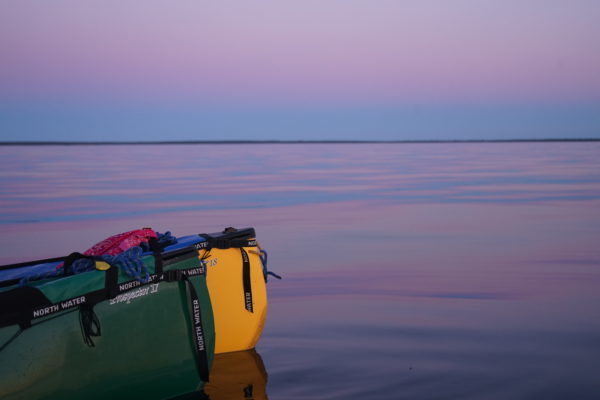
Lindsay – I had a euphoric moment one evening after we had been windbound for a couple of days on the Great Bear Lake. One of my biggest dreams from childhood has been to catch fish and then have enough time to actually smoke it over the fire. Since we were windbound I finally did have the time. I remember sitting around the campfire that night really late because we were trying to stay on top of our sleep schedule and stay up through the night even though we were windbound and I was just totally euphoric; overcome with happiness and joy about having realized my dream. Not just with smoking the fish but the trip in general was something I had dreamed of for about a decade prior and I was just like “wow, I’m living it right now with five of my best friends “. I was on cloud 9.
Emily – Overall I think our group was the major highlight for me. I loved being with those women and our cohesion, love, trust and mutual admiration really made the trip what it was. If we hadn’t bonded or moulded together as a unit the way we did, it would have been a totally different experience.
Part of the intention behind the 6 North of 60 trip was to lead by example and inspire more young women to make these kinds of trips by showing them how capable we can be in wilderness environments. Is there a piece of advice or essential gear recommendation that you might pass on to the next group of girls who attempt this trip or a similar trip?
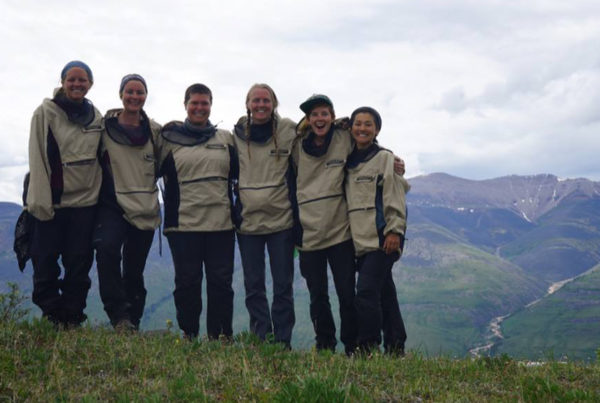
Also I think the idea of expressing gratitude on trip is so important. One of the main things that we took from Ogichi is something that we always did on camp trips called “a grateful circle”. We do it at the end of each day when we’re gathered around the campfire, all the campers and staff go around and say something that they’re grateful for; that carried over from Ogichi into our trip. Expressing gratitude for your trip mates, for the land around you, the experiences of the day. I’ve always loved hearing everyone’s responses because it really helps you to understand what kind of trip they’re having. Expressing appreciation for your tripmates in a genuine way and setting time aside to do that everyday really creates a strong bond and a cohesive group.
Emily – Intention and gratitude were fundamental to our expedition. We shared our intentions / goals / feelings at the beginning of each body of water. Some simple, and some more profound. But it helped us live purposefully, and to be focused on more than just day-to-day trip tasks. We also had a grateful circle every night; being conscious all day about what you are grateful for, and sharing those with your sisters at night has a profound impact.
In terms of gear, we really appreciated all of the gear we brought. The most important items that we had for this expedition that we don’t normally take were higher quality expedition boats (two Prospector 17 and one Prospector 18 in TuffStuff Expedition), spray skirts, dry pants, and bug shirts. Each was essential. Our boats really took a beating, but held up beautifully, and allowed us to have more confidence as we navigated that wild land. The spray skirts saved us in the rapids where we would have took on too much water, and allowed us to run loaded boats versus portaging our gear. They also kept us warmer while paddling on the cold nights. The dry pants were essential for our walks upstream. So many days of this in icy water without those would have been pretty rough. And finally the bug shirts: absolute lifesavers. We wore them all the time and they made a huge difference to our sanity. Many mornings were spent eating oatmeal inside our shirts to avoid having 1,000 mosquitos in our breakfast.
Sammi – The biggest lesson is just learning to let things go. The whole challenge of what life is like living in the wilderness is that you have no control over major things like the weather that can impact your daily life in huge ways. The most 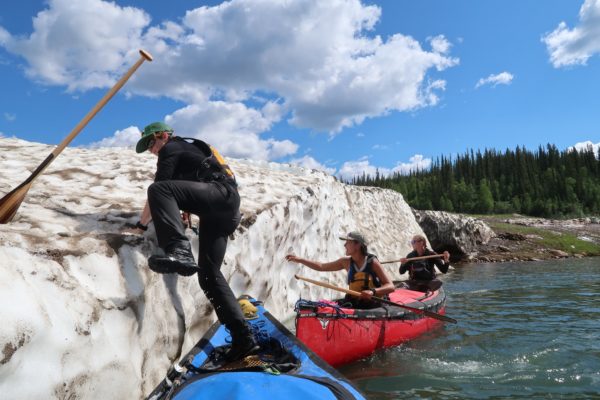
Lindsay – My advice is don’t be afraid to take the first initial steps. We talked about doing this for so long and it just never happened because the timing was never right and there were a lot of people that just thought that we couldn’t do it. It was pretty discouraging and devastating honestly. So my advice is just believe in yourself.. If you want to do something badly enough and it’s a dream of yours, you will find a way to make it happen. Once you take the first steps forward, things will start to align. If you work hard and put the effort in it will come together how it’s supposed to. Don’t listen to the haters.
For more images from their incredible trip, check out @6Northof60 on Instagram
